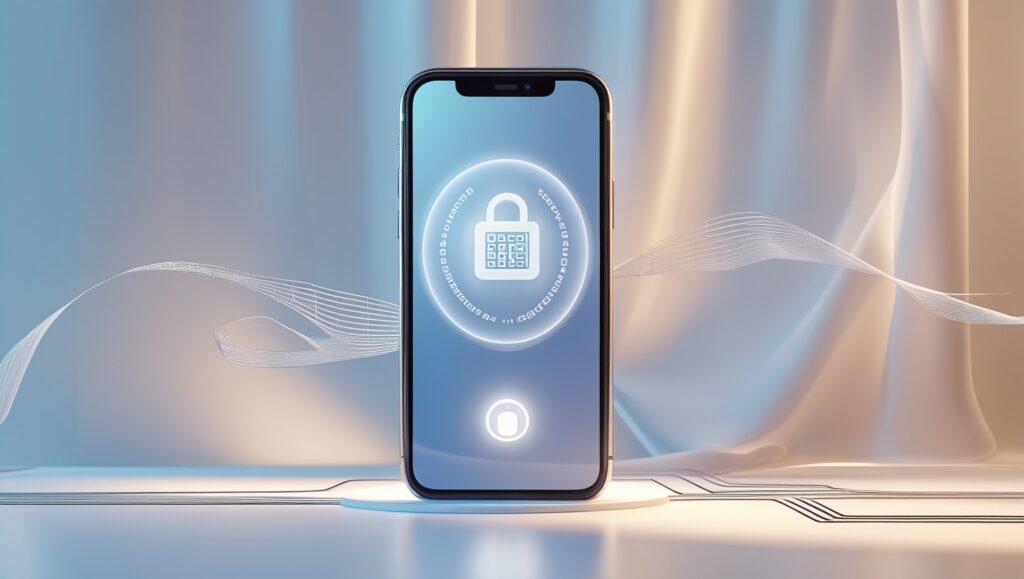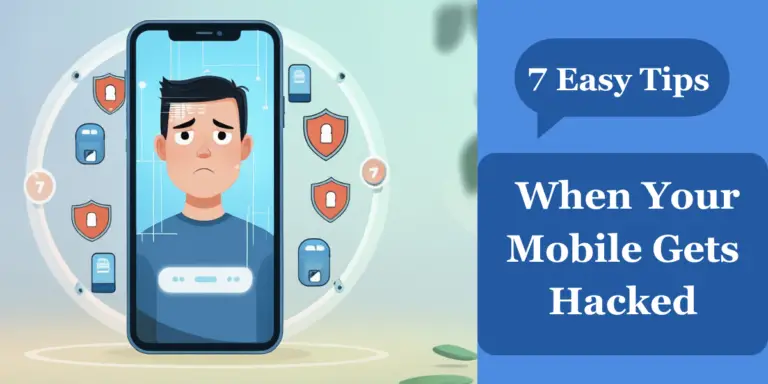In today’s world, where everything is connected, smartphones are more than just voicing devices; they are where you’re banked, most private diary entries are found, and with everything that matters.
But what happens when it gets hacked? This thought alone is enough to send hives crawling up and down anyone’s back.
Fear not—there are some quick actions you can take right now to regain control and safeguard your device. So let’s dive into the 7 super simple steps to tackle such an incident like a pro.
7 Steps When Mobile Gets Hacked
Step 1: Disconnect from All Networks
The first thing to do is disconnect your phone from the internet. Hackers use your device’s connection to the network to access and send information, so disconnecting is tantamount to pulling the plug on the operation.
- Turn off Wi-Fi and Mobile Data: Slide down to bring open quick settings and toggle off Wi-Fi and mobile data. If possible, turn on airplane mode so nothing can go in or out.
- Why this helps: It not only prohibits ongoing data theft, but it also prevents any unauthorized access performed remotely.
Pro tip: Stay away from public Wi-Fi unless it is secured and you’re using a VPN. Hackers make use of these networks to target unsuspecting users.
Step 2: Identify Suspicious Activity
The first thing that needs to be done once the disconnection occurs is to start checking the phone for strange conduct. Here is what to look out for:
- Unfamiliar Apps: Check your app list for anything you forget to download.
- Battery Drain: Your phone battery drains pretty rapidly; perhaps, some malware is running in the background.
- Pop-Ups and Ads: It is a very clear warning when there are intrusive pop-ups in between sessions rather than during browsing.
Quick Action: Note down any suspicious things that you have seen, it may help when reporting the issue or reinstalling the application.
Step 3: Change Your Passwords Immediately
Assume that the hacker might gain access to all the passwords stored.
Update them all, beginning with the most important accounts such as email accounts, social media accounts, and online bank accounts.
- Use a password manager to create strong, unique passwords.
- Enable two-factor authentication or 2FA from wherever possible even if just for some logins to provide an added security layer, in case someone has got hold of their usernames and passwords.
Don’t Forget: Switch all the accounts if you did share the same password with others to avoid cascading breaches.

Step 4: Scan and Remove Malware
You can do a malware scan on your device to identify and clear any threats hiding on it. Most smartphones don’t feature antivirus software, but there are trusted options available.
- Android users: Download a well-known antivirus application such as Avast, Bitdefender, or Malwarebytes. Then perform a full scan and follow the instructions by the application to remove any threats detected.
- iPhone users: It is true that viruses are not common with iOS, but one should always examine the settings for any rogue applications or profiles.
Important Note: Do not install random antivirus applications. Only consider those trusted and proven brands.
Step 5: Perform a Full Backup (If Safe)
In case you are certain that your information has not been compromised, make sure you back up your device.
By backing it up, you will avoid losing some important files, images, or messages during recovery.
How to Back Up Safely:
- On Android: Go to Settings > Google > Backup.
- On iPhone: Use iCloud or connect to iTunes.
Warning: Do not include this step if you suspect your backup may contain malware; use it as a last resort to restore your device.
Step 6: Reset Your Device
This is your “clean slate” move. Factory resetting a phone means removing all items, including the intrusive kind.
It sounds drastic, but it’s the surest way to ensure the safety of your device.
Steps for Factory Reset:
- On Android: Go to Settings > System > Reset > Factory Data Reset.
- On iPhone: Go to Settings > General > Reset > Erase All Content and Settings.
Before you reset: If the data is trusted, make backups because otherwise, everything will wipe out during the reset process.
Step 7: Reinforce Your Security
Since your phone is now clean, it’s time to make sure that this won’t happen again. Strengthening your security is the key to always being safe.
- Install Only Trusted Apps: Please keep to the applications from official store houses, such as Google Play Store or Apple’s App Store.
- Keep Software Updated: It is regularly patched to keep away from vulnerabilities that could be exploited by hackers.
- Use a VPN: A VPN will therefore strengthen up your connection because it encrypts everything you do on public Wi-Fi.
- Monitor Activity: Constantly checks on application permissions and assigning unusual login activity on accounts.
Extra step: Know learning about phishing scams and counterfeit applications. These are common access methods for hackers into mobile devices.
How to Recognize a Hacked Phone
Knowing the symptoms of a hacked phone can really help prevent such occurrences in the future. Below is a short list of some of them:
- Unusual Data Usage: Sudden spikes in data usage can indicate that malware is sending your information to its server.
- Performance Issues: Your device suddenly starts lagging or overheating, and possibly, it has been hacked or compromised.
- Strange Texts or Calls: Sometimes hackers can use your mobile phone to send spam or malicious links.
- Unauthorized Purchases: Watch over the charges incurred on your bank and app store accounts that you haven’t made.
Tools to Protect Your Phone
Some tools will help in securing your device in what follows:
- Password Manager: Keeps all your credentials secure.
- Antivirus App: Protects your phone from malware and spyware.
- VPN Service: Encrypts your connection and hides your online activity.
- Authenticator App: Adds 2FA to your accounts for extra protection.
Final Thoughts
Yes, you have been hacked, but you can take back control of your phone all in 7 simple steps.
Once you return your phone to its pristine state, you can then read through the subsequent points to prevent it from happening again.
However, nothing beats vigilance in making your digital life safe.
Has anyone experienced a hack in their phone? Kindly share it in the comments below because your experience can assist someone else!
Related Posts:
- How to Get Your Digital Life Ready for When You’re Gone
- How to Keep Your Phone From Exploding: Simple Safety Tips
- Best Method To Buy Refurbished Phones: 7 Easy Tips
